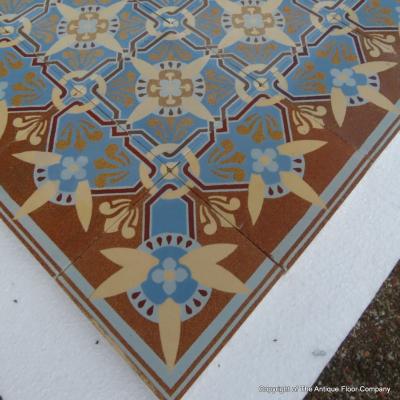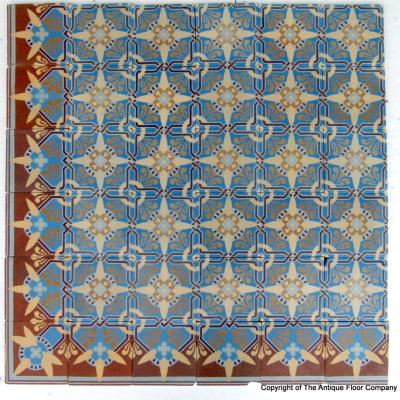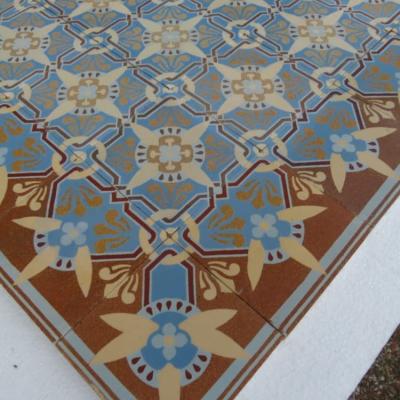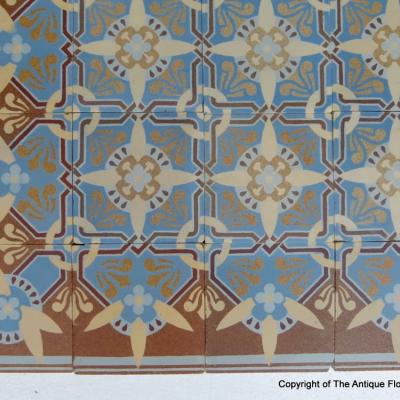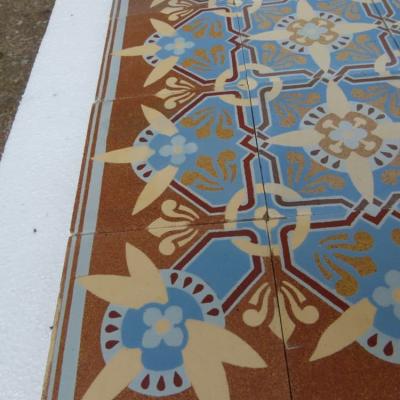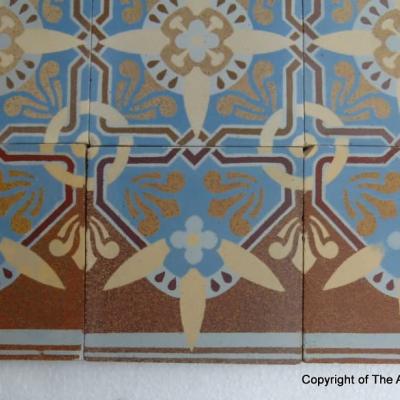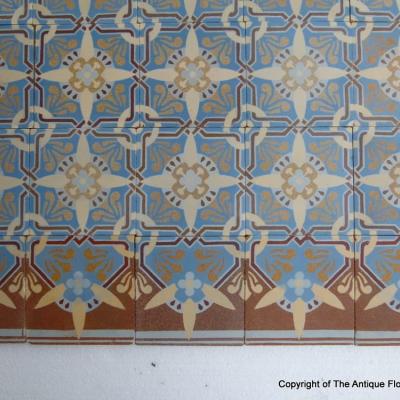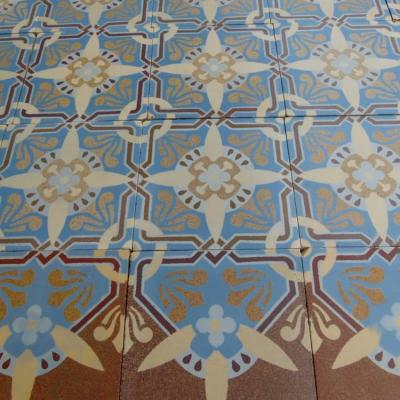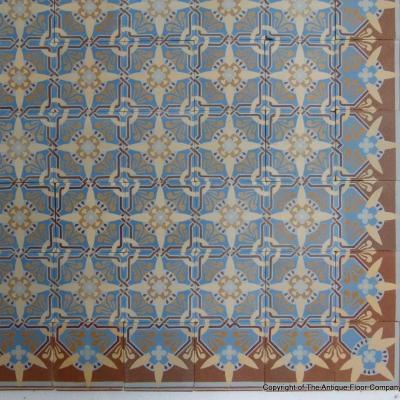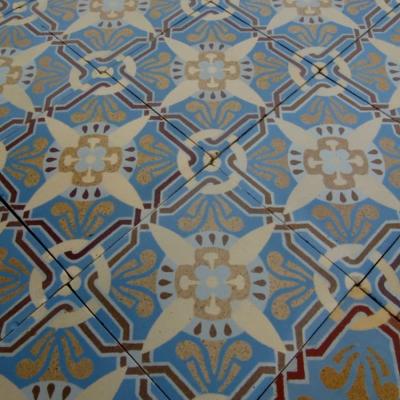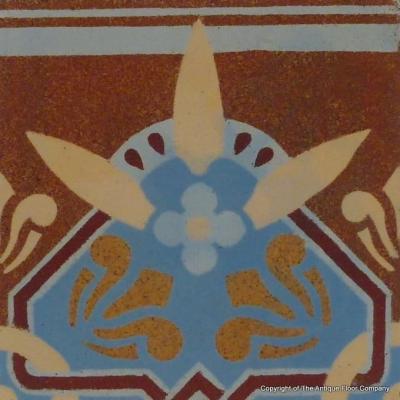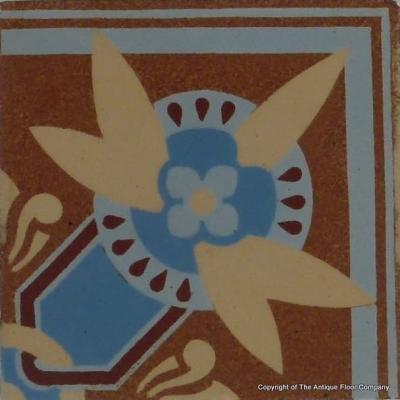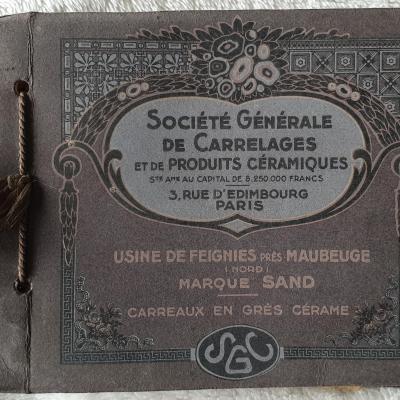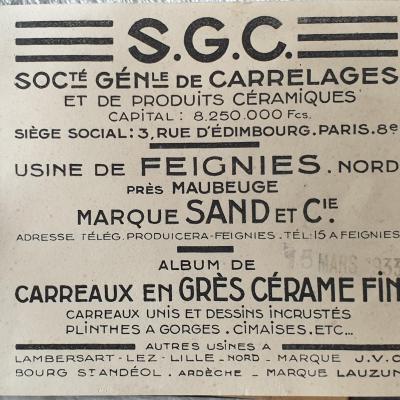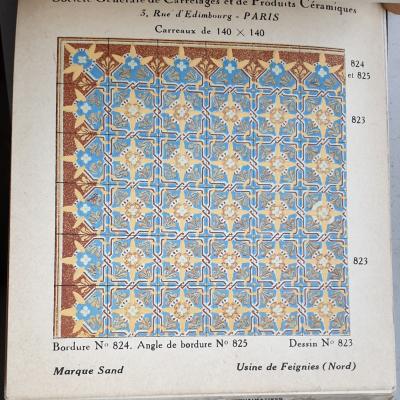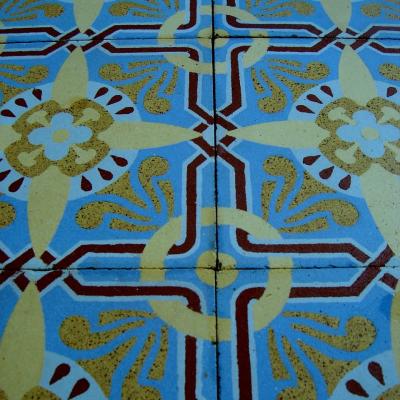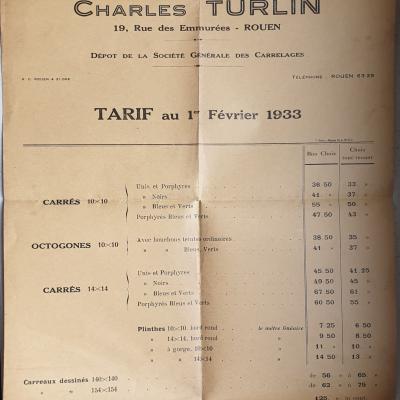A 9.9m2 French art deco ceramic - 1933
A 9.9m2 / 106.6 sq ft French ceramic floor, manufactured in 1933, and bearing all of the DNA of art deco styling
The floor was manufactured by Societe Generale. de Carrelages et de Produits Ceramiques (SGC) and we include in the photo gallery a scan from their original catalogue showing both the field and same size border tile.
The tiles are 14.2cm sq and c.+/-13mm thick
The floor design is a linked single tile tessellation and some exquisite fine detailing can be seen in the high resolution photographs presented. Handmade in small batches, the colours are crisp and there is some tonal variation amongst the tiles, all adding to their charm.
In excellent condition this a good quality ceramic with a consistent and deep slip and the vibrant blues, yellows and burnt red are as sharp now as they were when they left the kiln.
The floor has been completely cleaned of old mortar and wax and being ceramic can be relaid inside, with underfloor heating systems, or outside; on a path or patio, where resistance to high summer and sub zero winter temperatures will not effect the tiles.
Tile quantities, give or take one or two:-
Field tiles – 445 - 9m2 / 96.5 sq ft
Large borders - 42 - 0.85m2 / 9.1 sq ft or 6 linear metres / 19.7 linear feet
plus free reject tiles for offcuts - c.25 field tiles
This is one of three floors reclaimed from the same house, the others also being of the same manufacturer and bearing the same art deco DNA. They can be seen by clicking here and here
NOTE
Antique tiles were most commonly made in single or two tile moulds. Before current computer automation methods their moulds were made my hand and the colour slips mixed by eye. Kiln temperatures could also be variable, as could the firing time. The result is that often tiles display subtle size and thickness variations and there can be tonal variations in colours, owing to the slip mixing and/or firing time. All of this makes these handmade tiles unique and adds to their charm. Some floors display their subtle variations in size and tones, some not, but when photographing we always take a random section of the floor so that it is representative of the whole. A tiler should always dry lay a section of the tiles to familiarise himself with them before starting to fix lay.
CE127 MAD37



